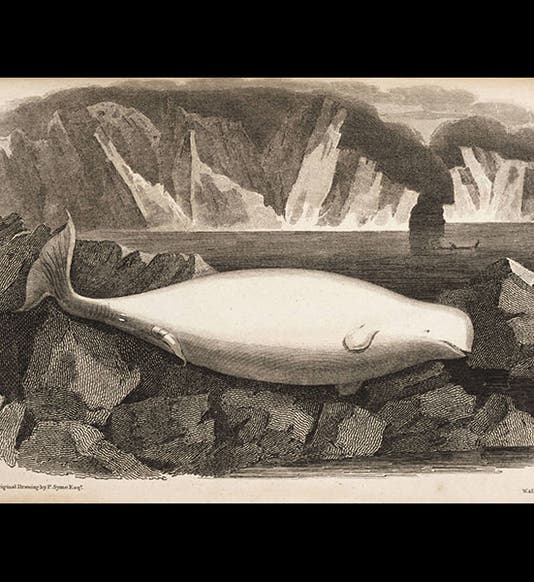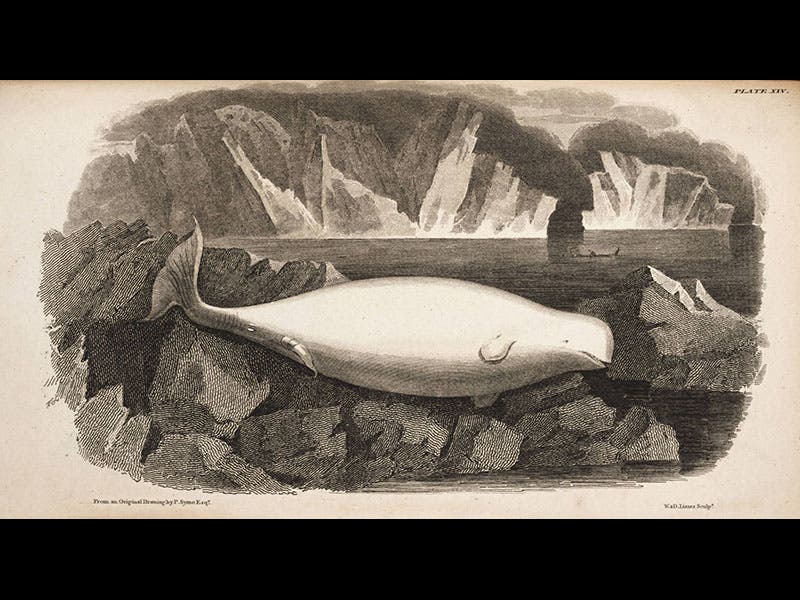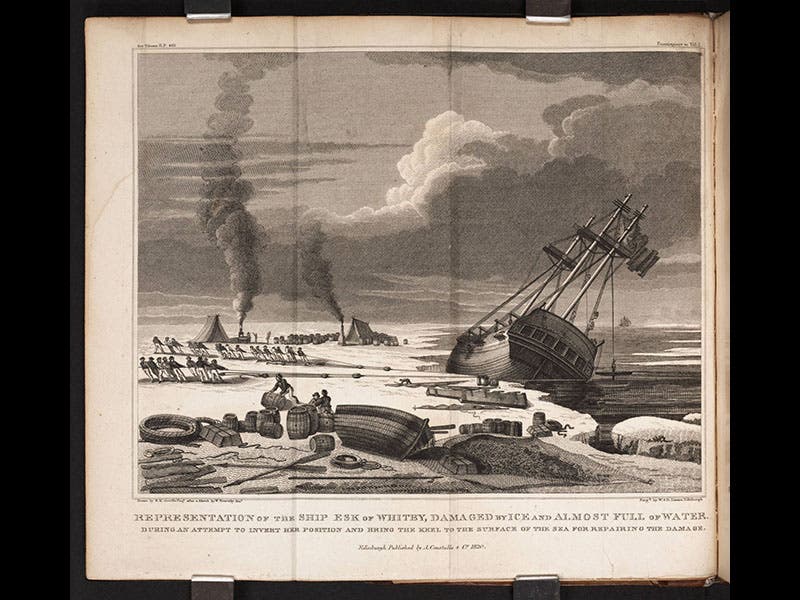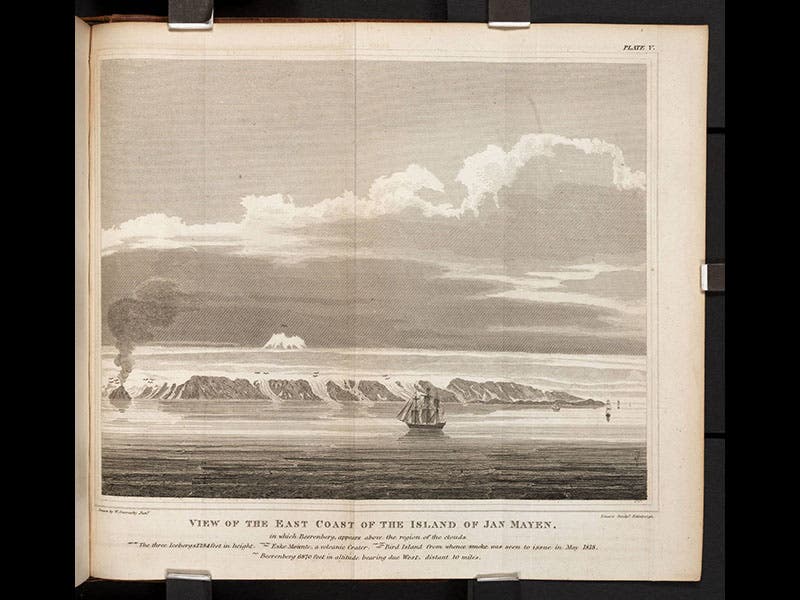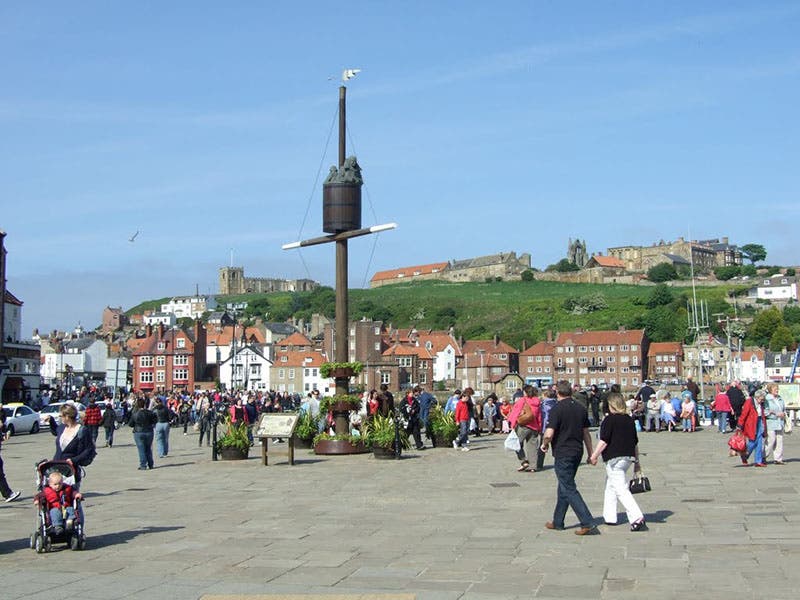Scientist of the Day - William Scoresby, Jr
William Scoresby, Jr., a whaling captain, was born Oct. 5, 1789. There weren't many whalers who made their mark in scientific circles, but Scoresby was the exception. He made annual whaling trips into Arctic seas, always keeping an eye on his natural surroundings, and in addition to making notes on the polar bear and the beluga whale (first image), he noticed one year that the ice floes were thinning, and so he suggested to John Barrow of the Admiralty that now might be a good time to renew the search for a Northwest Passage. Barrow agreed, and in 1818 the first of many Royal Navy ships headed north, undergoing a series of adventures that we documented in our 2008 exhibition, Ice: A Victorian Romance.
In 1816, on a visit to Spitsbergen, the hull of his ship suffered a gaping hole when it was rammed by an underwater projection from an iceberg. Scoresby emptied the ship and actually tried to turn it upside down in the water to repair it (second image). This was unsuccessful, so he resorted to fothering the ship, where the hull is wrapped with a sail containing shredded rope covered with tar. This plugged the hole well enough that they could pump out the water and repair the hull from the inside.
A year later, Scoresby was whaling off Jan Mayen Island, a wisp of an isle north of Iceland and east of Greenland. The island has a towering volcano, Beerenberg, that juts above the clouds. Scoresby not only mapped the southeast coast of the island, but he produced another sketch showing the towering presence of the volcano at the northeast tip of the island (third image).
Scoresby’s Account of the Arctic Regions (1820) has a graphic frontispiece depicting the dangers of whaling (fourth image); it is also the source of the first three images above. We have now acquired his Journal of a Voyage to the Northern Whale-Fishery (1823), which is an account of an 1822 expedition to Greenland. After he returned from this voyage, Scoresby went to Cambridge, earned a divinity degree, gave up his Arctic exploration, and was elected a Fellow of the Royal Society. There is a memorial to both Scoresbys, father and son, in Whitby (fifth image). The crow’s nest was chosen because it was invented by the father, William Senior.
Dr. William B. Ashworth, Jr., Consultant for the History of Science, Linda Hall Library and Associate Professor, Department of History, University of Missouri-Kansas City. Comments or corrections are welcome; please direct to ashworthw@umkc.edu.

